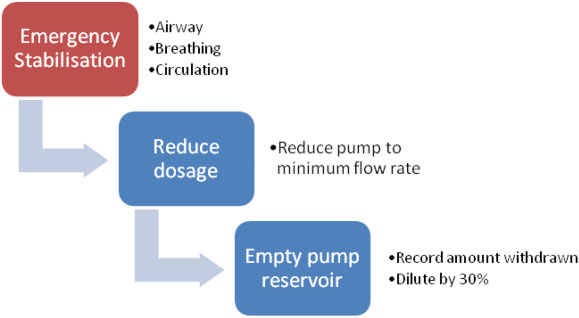
1. Introduction
Baclofen pump implantation, also known as intrathecal baclofen therapy (ITB), is a medical procedure involving the insertion of a small, programmable pump that delivers the muscle relaxant drug baclofen directly into the fluid surrounding the spinal cord. This article aims to provide an overview of the implant, its purpose, indications, types, procedure, potential risks, benefits, post-implant care, and alternatives.
2. Purpose and Function
The main purpose of a baclofen pump is to provide continuous, targeted delivery of baclofen to alleviate symptoms related to severe spasticity. This approach allows for lower dosages and fewer side effects compared to oral medication, as the drug is delivered directly to the site of action.
3. Indications
Baclofen pump implantation is typically recommended for patients with severe spasticity that has not responded adequately to oral medications or other therapies. Common conditions associated with spasticity include multiple sclerosis, cerebral palsy, spinal cord injury, brain injury, and stroke.
4. Mechanism of Action
Baclofen acts as an agonist at the GABA-B receptors in the central nervous system, inhibiting the release of excitatory neurotransmitters and reducing muscle tone. The pump delivers a controlled amount of baclofen to the intrathecal space surrounding the spinal cord, providing continuous, targeted therapy for spasticity management.
5. Types of Implants available
Various models of programmable baclofen pumps are available, with varying reservoir capacities, flow rate ranges, and battery life. The choice of implant depends on the patient’s specific needs and the physician’s recommendation.
The two primary manufacturers of intrathecal baclofen pumps are Medtronic and Flowonix. Both companies offer various models with different features to suit individual patient needs. Note that there might be newer models or additional manufacturers in the market since then.
- Medtronic SynchroMed II: The SynchroMed II Programmable Pump is a widely used baclofen pump designed to deliver intrathecal baclofen. It features a programmable drug delivery system, allowing healthcare providers to adjust the dosage and flow rate according to the patient’s needs. The pump has a 20 mL or 40 mL reservoir capacity, depending on the model.
- FlowonixPrometra: The FlowonixPrometra family of pumps includes the Prometra II and the Prometra II 20 mL Programmable Pumps. These devices are designed for targeted drug delivery, including intrathecal baclofen. They feature a unique valve-gated delivery system, offering precise and consistent drug delivery. The Prometra II has a 40 mL reservoir capacity, while the Prometra II 20 mL has a 20 mL capacity.
Both Medtronic and Flowonix offer various accessories and components to support their intrathecal baclofen pumps, such as catheters and programmers.
6. Procedure for placing Implant
The implantation procedure is typically performed under general anesthesia. A small incision is made in the lower back to access the intrathecal space, and a catheter is inserted to deliver baclofen. The pump is then placed under the skin of the abdomen, connected to the catheter, and programmed to deliver the appropriate dose of medication.
7. Potential Risks
As with any surgical procedure, there are potential risks involved, including infection, bleeding, spinal fluid leakage, and device malfunction. However, these risks are generally considered rare and can be minimized by following proper surgical techniques and post-operative care.
8. Benefits and Effectiveness
Baclofen pump implantation can significantly improve spasticity management, resulting in increased mobility, reduced pain, and improved quality of life for patients. Moreover, the targeted delivery of baclofen reduces the need for high oral doses and the associated side effects.
9. Post Implant Care & Follow up
After the implantation, patients require regular follow-up appointments to monitor the pump’s functioning, adjust the dosage, and refill the medication reservoir. Proper care and maintenance of the pump site are essential to prevent infections and ensure optimal device functioning.
10. Alternatives to Implants
Alternatives to baclofen pump implantation include oral medications, botox injections, physical and occupational therapy, and in some cases, selective dorsal rhizotomy (SDR) or other surgical interventions.
11. Summary
Baclofen pump implantation is an effective treatment option for patients with severe spasticity, offering targeted therapy and improved symptom management. While there are potential risks associated with the procedure, the benefits often outweigh the risks for many patients.
12. Disclaimer
This article provides general information about healthcare topics to help individuals make informed decisions and connect with medical professionals for support. However, it is important to note that the information in this article is not a substitute for professional medical advice, diagnosis, or treatment. It is recommended to always seek the advice of a qualified healthcare provider for any medical questions or concerns. Reliance on any information provided in this article is solely at your own risk. If you are interested in scheduling an appointment with a qualified specialist in Pediatric neurosurgery, you can contact us via phone or message on Telegram / WhatsApp at +91 8109 24 7 365.
